|
Sopwith Camel Comic
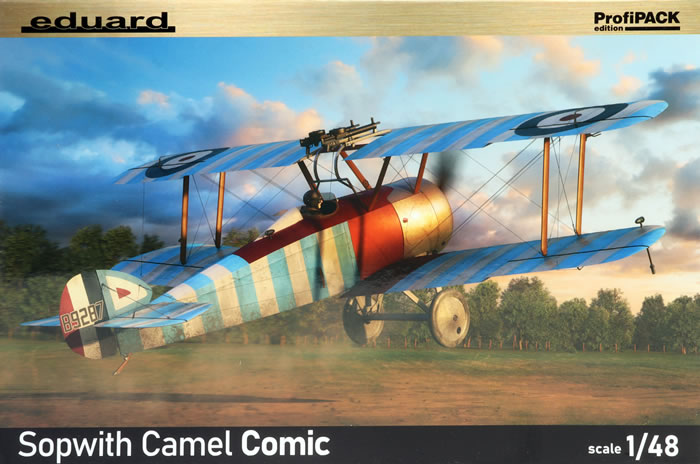
Eduard ProfiPACK, 1/48 scale
S
u m m a r y |
| Catalogue Number: |
Eduard Kit No. 82175 - Sopwith Camel Comic |
| Scale: |
1/48 |
| Contents and Media: |
130 parts in grey coloured plastic (including 51 marked not for use); 15 parts in clear (7 marked not for use); colour photo-etched fret; self-adhesive masking sheet; markings for five aircraft |
| Price: |
USD$39.95 plus shipping,
available online now from Eduard
GBP£21.20 (£17.67 Export Price) plus shipping available from Hannants |
| Review Type: |
FirstLook |
| Advantages: |
High level of detail; outstanding surface features including fabric texture, stringers, rib tapes, recessed and raised rivets where appropriate; includes colour photo-etched parts; separate control surfaces; many options, some applicable to other releases, high quality decals. |
| Disadvantages: |
|
| Conclusion: |
Eduard's 1/48 scale Sopwith Camel is highly detailed, features exquisite surface textures and should be a pleasure to build thanks to its modest parts count and thoughtful parts breakdown. |
Reviewed by Brett Green

The Sopwith Camel is a British First World War single-seat biplane fighter aircraft that was introduced on the Western Front in 1917. It was developed by the Sopwith Aviation Company as a successor to the Sopwith Pup and became one of the best known fighter aircraft of the Great War.
The Camel was powered by a single rotary engine and was armed with twin synchronized Vickers machine guns. Though difficult to handle, it was highly manoeuvrable in the hands of an experienced pilot, a vital attribute in the relatively low-speed, low-altitude dogfights of the era. In total, Camel pilots have been credited with downing 1,294 enemy aircraft, more than any other Allied fighter of the conflict. Towards the end of the First World War, the type also saw use as a ground-attack aircraft, partly because the capabilities of fighter aircraft on both sides had advanced rapidly and left the Camel somewhat outclassed.

The main variant of the Camel was designated as the F.1. Other variants included the 2F.1 Ship's Camel, which operated from aircraft carriers; the Comic night fighter variant; and the T.F.1, a "trench fighter" armoured for attacks on heavily defended ground targets. A two-seat variant served as a trainer. The last Camels were withdrawn from RAF service in January 1920.*
Comic
The "Comic" was a Camel variant designed specifically for night-fighting duties.
The twin Vickers guns were replaced by two Lewis guns on Foster mountings firing forward over the top wing, as the muzzle flash of the Vickers guns could blind the pilot.
*Historical summary adapted from Wikipedia
Eduard released their original 1/48 scale Sopwith Camel in 2003. This was a very good kit in its day and we have several nice Galleries on HyperScale to prove it.
Even so, Eduard decided to go back to the drawing board and deliver a completely new 1/48 scale Sopwith Camel kit in 2021. This kit was right up with Eduard's lofty standards of detail and surface textures.
Other recent variations on the new tooling are Eduard's 1/48 scale Sopwith F.1 Camel (BR.1) and the Clerget version.
The new Comic night fighter kit comprises around 130 parts in grey coloured plastic (including 51 marked not for use), 15 parts in clear (7 marked not for use), a colour photo-etched fret; a self-adhesive masking sheet and markings for five aircraft.
The total parts count will be very modest indeed when options are taken into account, so this will be an ideal subject for those modellers wanting to dip their toe into the pond of WWI biplane subjects for the first time.
Detail is excellent. The cockpit is built up from plastic and photo-etched parts.
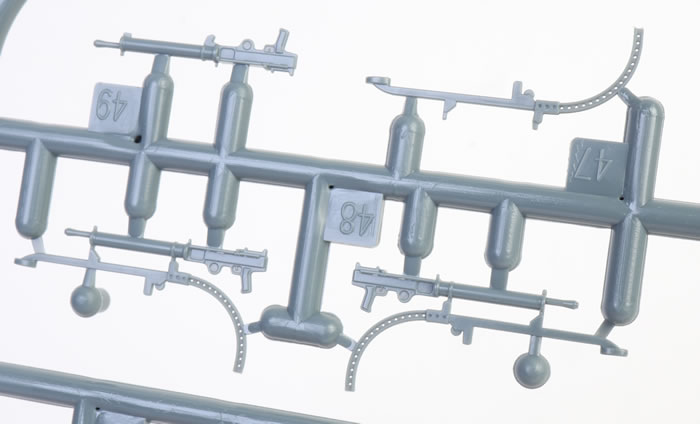
A new colour photo-etched set for the Comic supplies harness straps and instrument panel. The instrument panel is layered with precisely printed markings and needles at the rear and an authentic woodgrain texture on the front.
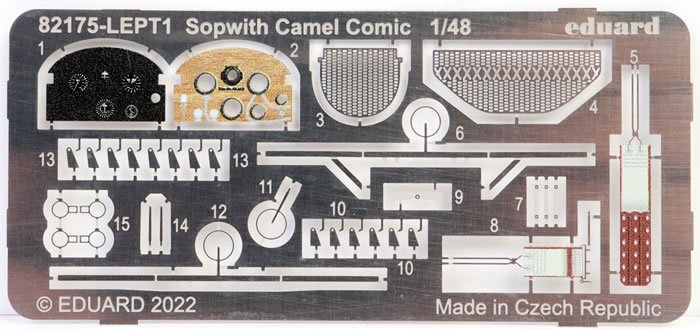
A wicker pilot's seat is also included on the photo-etched fret with separate parts for the squab and the back rest inside a plastic outer frame.
Smaller details such as ring and bead gunsights and actuators are also offered.
The fabric treatment on this model is superb - right up with their best.
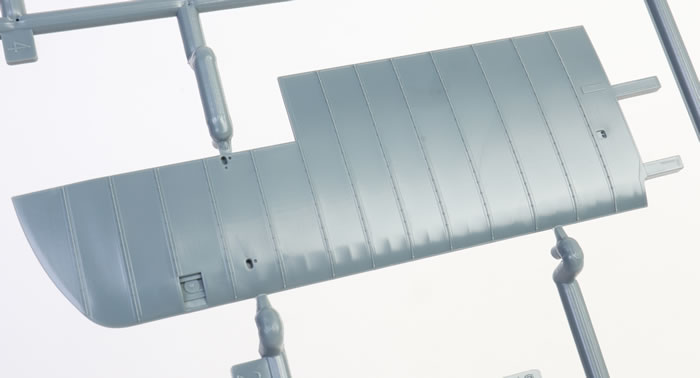
I really like the stitching detail and combination of recessed and raised rivets on the fuselage too.

The clear sprue is free from distortion.

Parts breakdown is conventional for a WWI aircraft. The lower wings are separate while the upper wing is full-span, and all control surfaces are separate. There is a single pair of interplane and cabane struts on each side, so this should not be too much of a chore. Deep locating holes and pins are present too.
Markings
Markings are supplied for five schemes with some interesting and varied markings.
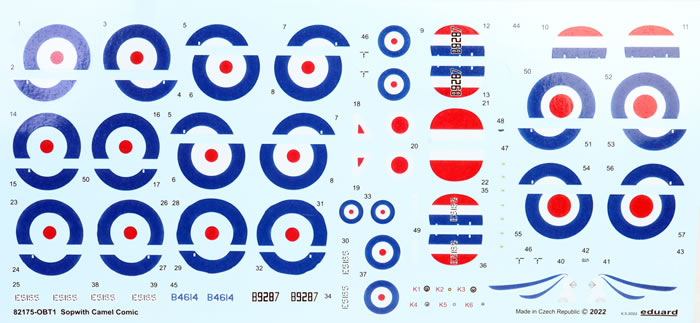
The single decal sheet is perfectly printed by Eduard.
Full colour four view diagrams and historical notes are included for all of the schemes.
Eduard's 1/48 scale Sopwith Camel Comic is highly detailed, features exquisite surface textures and should be a pleasure to build thanks to its modest parts count and judging by my experiences with recent Eduard kits.
Thanks to Eduard for the sample
Review Text Copyright © 2022 by
Brett Green
Page Created 4 July, 2022
Last updated
4 July, 2022
Back to HyperScale Main Page
Back to Reviews Page |
